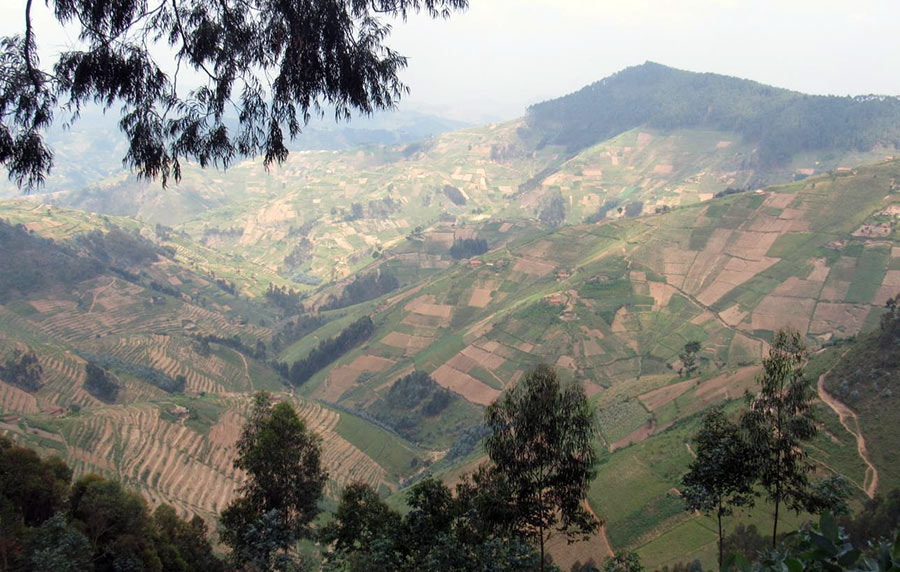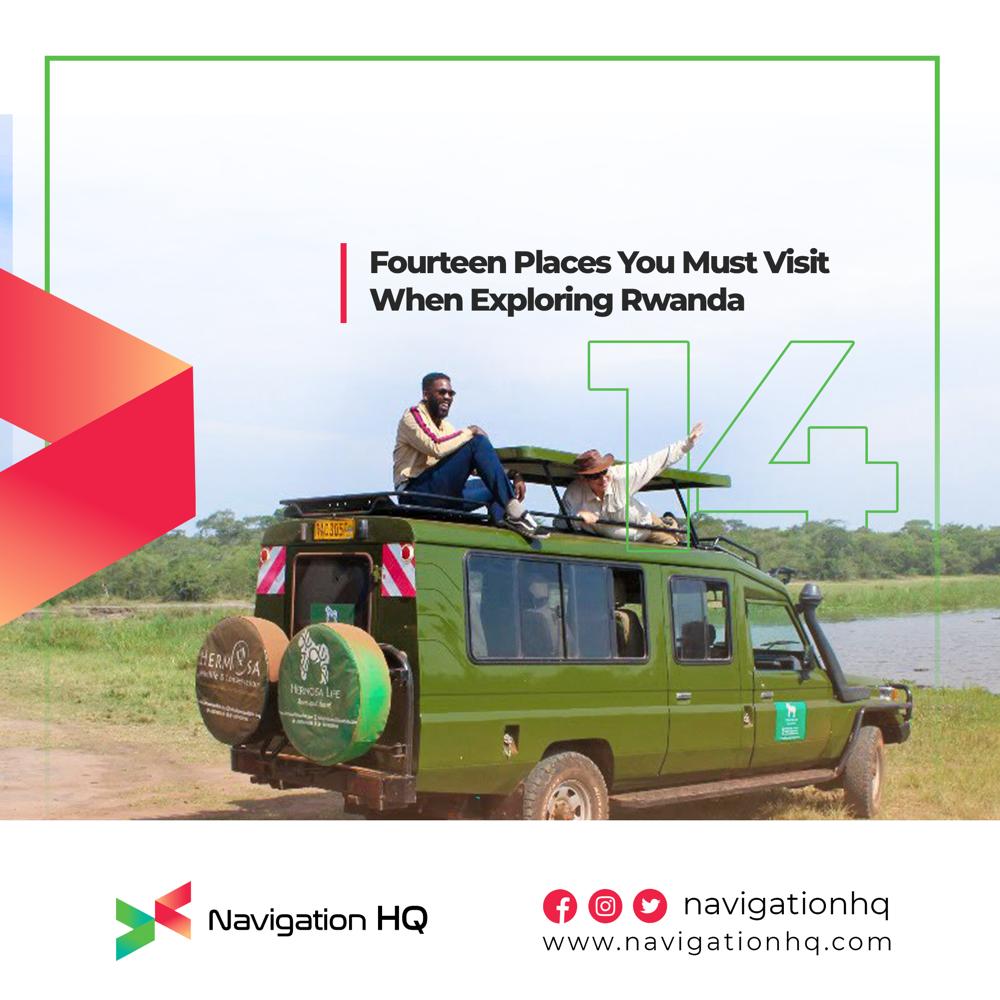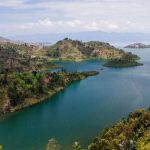Rwanda, often referred to as the “Land of a Thousand Hills,” is a country in East Africa renowned for its stunning landscapes, vibrant culture, and rich biodiversity. From lush rainforests to serene lakeshores, Rwanda offers a plethora of breathtaking destinations for travelers to explore. This article presents different must-visit places that showcase the diversity and beauty of Rwanda, providing a glimpse into the country’s natural wonders and cultural heritage.
1. Volcanoes National Park
Situated in the Virunga Mountains, Volcanoes National Park is a UNESCO World Heritage Site and a haven for wildlife enthusiasts. This magnificent park is home to critically endangered mountain gorillas, providing a unique opportunity for visitors to observe these gentle giants in their natural habitat. Trekking through the misty rainforests of Volcanoes National Park is a once-in-a-lifetime experience, allowing visitors to witness the incredible bond between humans and gorillas while contributing to their conservation efforts.
2. Nyungwe Forest National Park
Located in the southwestern part of Rwanda, Nyungwe Forest National Park is a haven for nature lovers and adventure seekers. The park is a vast expanse of ancient montane rainforest, teeming with biodiversity and awe-inspiring beauty.
Visitors can embark on thrilling canopy walks, hike through pristine trails, and encounter various primate species, including chimpanzees and colobus monkeys. The park’s lush vegetation, gushing waterfalls, and panoramic views make it a paradise for hikers, birdwatchers, and nature enthusiasts.
3. Lake Kivu
Nestled between Rwanda and the Democratic Republic of Congo, Lake Kivu is a picturesque freshwater lake offering a tranquil escape from bustling city life. With its crystal-clear waters and stunning shoreline, the lake provides ample opportunities for swimming, kayaking, and boating. Visitors can relax on the sandy beaches, enjoy a sunset cruise, or explore the nearby islands, each with its own unique charm. Lake Kivu’s serene ambiance and scenic beauty make it an ideal destination for those seeking relaxation and natural splendor.
4. Kigali
No visit to Rwanda is complete without exploring its vibrant capital city, Kigali. Despite its turbulent history, Kigali has emerged as a bustling and progressive metropolis. The city offers a blend of modernity and traditional charm, with its well-planned streets, colorful markets, and thriving arts scene.
Visitors can delve into the country’s history at the Kigali Genocide Memorial, stroll through the lively neighborhoods, visit local art galleries, and savor the flavors of Rwandan cuisine in the city’s diverse restaurants. Kigali’s friendly ambiance and dynamic atmosphere provide a captivating glimpse into the heart of Rwanda.
5. Akagera National Park
For wildlife enthusiasts, Akagera National Park is a must-visit destination. Located in eastern Rwanda, this park showcases the country’s savannah landscapes and is home to a wide array of wildlife species, including elephants, lions, giraffes, and zebras. Visitors can embark on thrilling game drives, boat safaris along the Akagera River, and guided nature walks to observe the park’s abundant flora and fauna. Akagera National Park offers a unique opportunity to experience a traditional African safari in the heart of Rwanda.
6. Musanze Caves
The Musanze Caves, also known as the Caves of Ruhengeri, are a fascinating underground geological formation located in Musanze District in northern Rwanda. These caves are a natural wonder that offers visitors an opportunity to explore a subterranean labyrinth and learn about its geological and historical significance.
Formed from ancient lava flows millions of years ago, the Musanze Caves consist of a network of interconnecting tunnels, chambers, and corridors. They extend over a distance of approximately 2 kilometers, although only a section of the caves is open for public exploration.
7. Lake Muhazi
Lake Muhazi is a picturesque freshwater lake located in the eastern part of Rwanda, in the Rwamagana and Kayonza districts. It is situated approximately 60 kilometers east of Kigali. Lake Muhazi stretches over an area of about 45 square kilometers, making it the second-largest lake in Rwanda after Lake Kivu. The lake is fed by several small rivers and streams, with its primary water source being the Nyabarongo River. Its tranquil waters are surrounded by rolling hills, lush greenery, and small fishing villages, creating a serene and scenic setting.
Lake Muhazi holds significance both ecologically and economically for the region. It supports a diverse ecosystem with various species of fish and serves as a vital water source for nearby communities for fishing, agriculture, and domestic use. Fishing is a primary activity on the lake, and local fishermen can often be seen casting their nets or using traditional fishing methods.
For visitors, Lake Muhazi offers opportunities for boating, canoeing, and birdwatching, as the area is home to a variety of bird species. The lake’s serene ambiance and natural beauty make it a popular spot for relaxation and enjoying the tranquil Rwandan countryside
8. Gishwati-Mukura National Park
Rwanda’s fourth national park, Gishwati Mukura, is made up of two separate forests – the larger Gishwati and small Mukura, forming a total of 34 square kilometers plus a buffer zone. The forests sit on the ridge which divides the Congo and Nile water catchment areas, along the incredibly biodiverse Albertine Rift in the west of the country. It is made up of 60 species of tree, including indigenous hardwoods and bamboo.
Gishwati is home to a group of 20 chimpanzees that live alongside golden monkeys – L’Hoest’s and Blue Monkeys. Birds are well represented too, 232 species have been seen at Gishwati and 163 at Mukura, among them Albertine Rift Endemic species and forest specialists. Activities in the park started in 2019 and include a guided nature hike, guided chimp and monkey tracking, bird watching, and a visit to the waterfalls. A visit to Gishwati offers the chance to witness a critical conservation project in action—and in some places, to appreciate the once-mighty Congo-Nile Divide forest as it has been for thousands of years.

9. Inema Arts Center
Immerse yourself in Rwanda’s thriving arts scene at the Inema Arts Center in Kigali. In this must-visit place in Rwanda, you get to explore contemporary African art, attend workshops, and engage with local artists, gaining insight into the country’s vibrant culture.
10. Iby’Iwacu Cultural Village
Iby’Iwacu Cultural Village is a unique and immersive cultural tourism site located near Volcanoes National Park in northern Rwanda. The village provides visitors with an opportunity to learn about and experience the rich traditions, customs, and heritage of the Rwandan people, particularly the Banyarwanda community.
The primary objective of Iby’Iwacu Cultural Village is to preserve and showcase Rwanda’s cultural heritage while promoting sustainable tourism and providing economic opportunities for local communities. The village offers a range of activities and interactive experiences that offer insights into the daily lives, rituals, and traditions of the Rwandan people.
Visitors to the village can participate in activities such as traditional dance performances, storytelling sessions, handicraft demonstrations, and cultural workshops. These activities allow visitors to engage with local artisans, learn traditional skills, taste local cuisine, and gain a deeper understanding of Rwandan culture.
11. Kigali Genocide Memorial
The Kigali Genocide Memorial, in Gisozi, Rwanda, just outside of central Kigali, commemorates the 1994 Rwandan genocide. The remains of over 250,000 people are interred there. There is a visitor center for students and others wishing to understand the events leading up to the genocide that occurred in Rwanda in 1994. The Centre is a permanent memorial to those who fell victim to the genocide and serves as a place where the bereaved could bury their family and friends. The Centre is managed and run by the Aegis Trust on behalf of the National Commission for the Fight Against Genocide.
The center documents the genocide, but it also describes the history of Rwanda that preceded the event. The Kigali Memorial Centre is international. It deals with a topic of international importance, with far-reaching significance, and is designed to engage and challenge an international visitor base.
The people of Rwanda embrace peace and reconciliation. They are committed to fighting the ideology of genocide. The memorials found throughout the country are moving testimonies in memory of the 1994 Genocide against the Tutsi and the people who lost their lives. The memorial gardens provide a place for quiet contemplation about the history of the Genocide against the Tutsi. They allow visitors to reflect on how we all have a personal responsibility to prevent discrimination and mass atrocity.
12. Imigongo Art Gallery
Imigongo art is a traditional art form that originated in Rwanda. It involves creating intricate geometric patterns using cow dung and natural pigments on wooden boards. The dung is mixed with ash, which kills bacteria and odor and is left to harden and is then decorated using colors made from organic material. The traditional colors are black, white, red, grey, and beige-yellow but increasingly other colors are used. The art form has been passed down through generations and has become an important part of Rwandan culture.
Imigongo art galleries showcase and sell these beautiful pieces of art. They are often located in tourist areas and offer visitors a chance to learn about the history and significance of the art form. Some galleries also offer workshops where visitors can learn how to create their own Imigongo art.
13. Lake Ihema
Lake Ihema is a lake in the east of Rwanda, at the border with Tanzania. The lake lies within the marshland of the Kagera River in which it empties via a very short channel. With an area of 100 km2 (40 sq mi), it is the largest lake entirely in Rwanda. Considering all other lakes in the country (including lakes shared with other countries), it would be the 3rd largest after Lake Kivu between Rwanda and the Democratic Republic of the Congo and Lake Rweru between Rwanda and Burundi. Lake Ihema is located in the Akagera national park a place where the big five animals (leopard, lion, buffalos, rhinos, elephants, and buffalo) in Rwanda call home.
In order to access Lake Ihema, one should first access Akagera national park. The lake is rich in biodiversity, except for fish. It is home to hippopotamuses and crocodiles. It has 550 species of birds, including remarkable species such as the shoebill (Balaeniceps rex) and the papyrus gonolek (Laniarius mufumbiri). Among the endemic species, there are ibises, jacanas, herons, plovers, sandpipers, malachite kingfishers, hawks, and many others
14. Nyanza – the King’s Palace
A reconstruction of the traditional royal residence, the King’s Palace is a beautifully-crafted thatched dwelling shaped like a beehive.
In olden times, Nyanza was the heart of Rwanda. According to oral tradition, it was the site of battles and power struggles.
For a long time, the monarchy was mobile, moving the court between various locations. When it eventually settled in one place, Nyanza was the obvious choice. The capital of the kingdom had as many as 2,000 inhabitants, and huts built with the same methods.
Even though the monarchy dissolved with Rwanda’s independence from colonial rule in 1962, the tradition of breeding and grooming Inyambo continues under the aegis of the Rwanda Agriculture Board. Enhancing the historical experience, a visit to the nearby Ethnographic Museum in Huye, home to one of Africa’s most prestigious ethnographic collections, complements the King’s Palace perfectly.
Rwanda’s beauty and diversity are encapsulated in these must-visit destinations. Whether it’s the enchanting gorillas of Volcanoes National Park, the ancient rainforests of Nyungwe, the serene shores of Lake Kivu, the vibrant streets of Kigali, or the captivating wildlife of Akagera, each destination offers a unique experience that showcases the splendor of Rwanda.






Can you be more specific about the content of your article? After reading it, I still have some doubts. Hope you can help me.